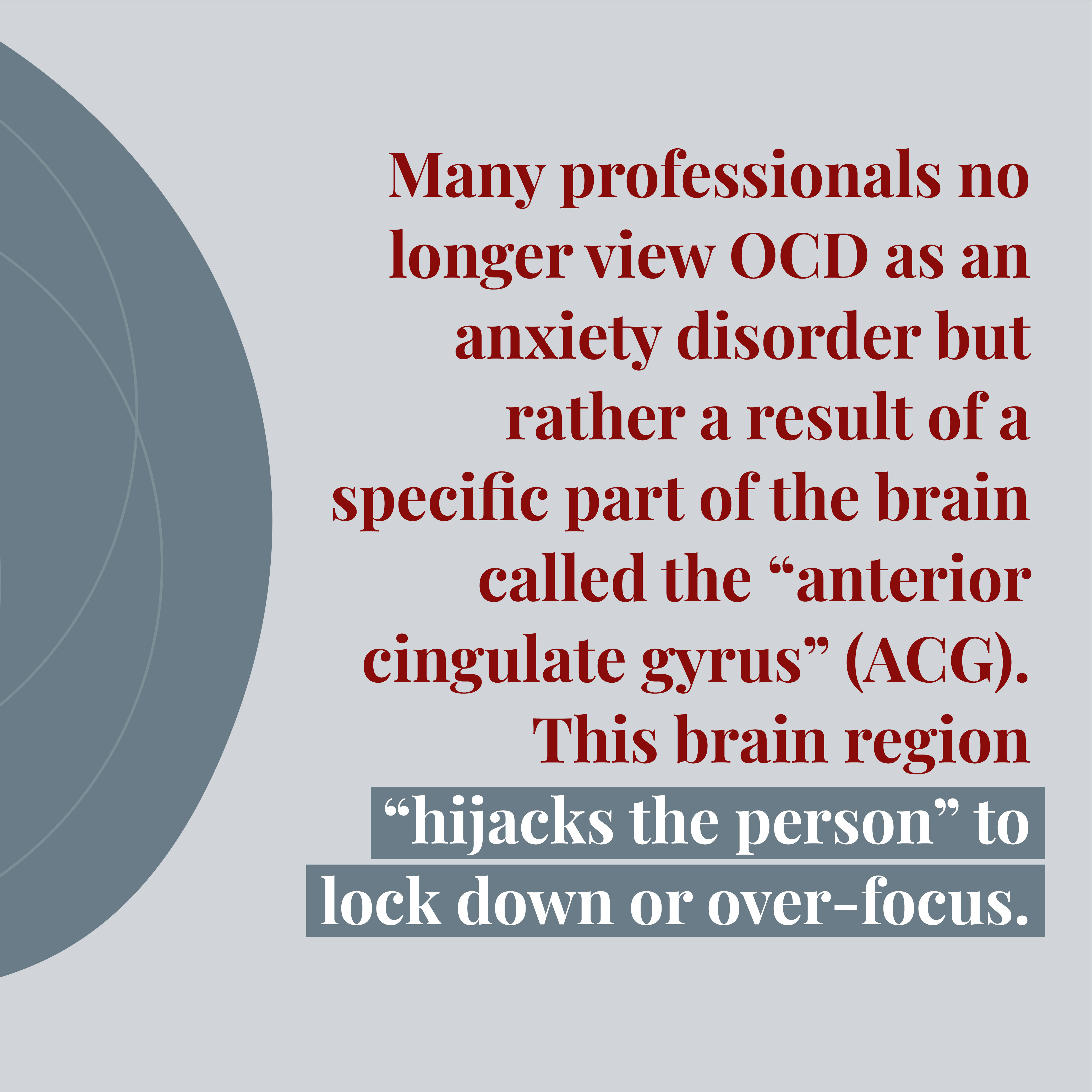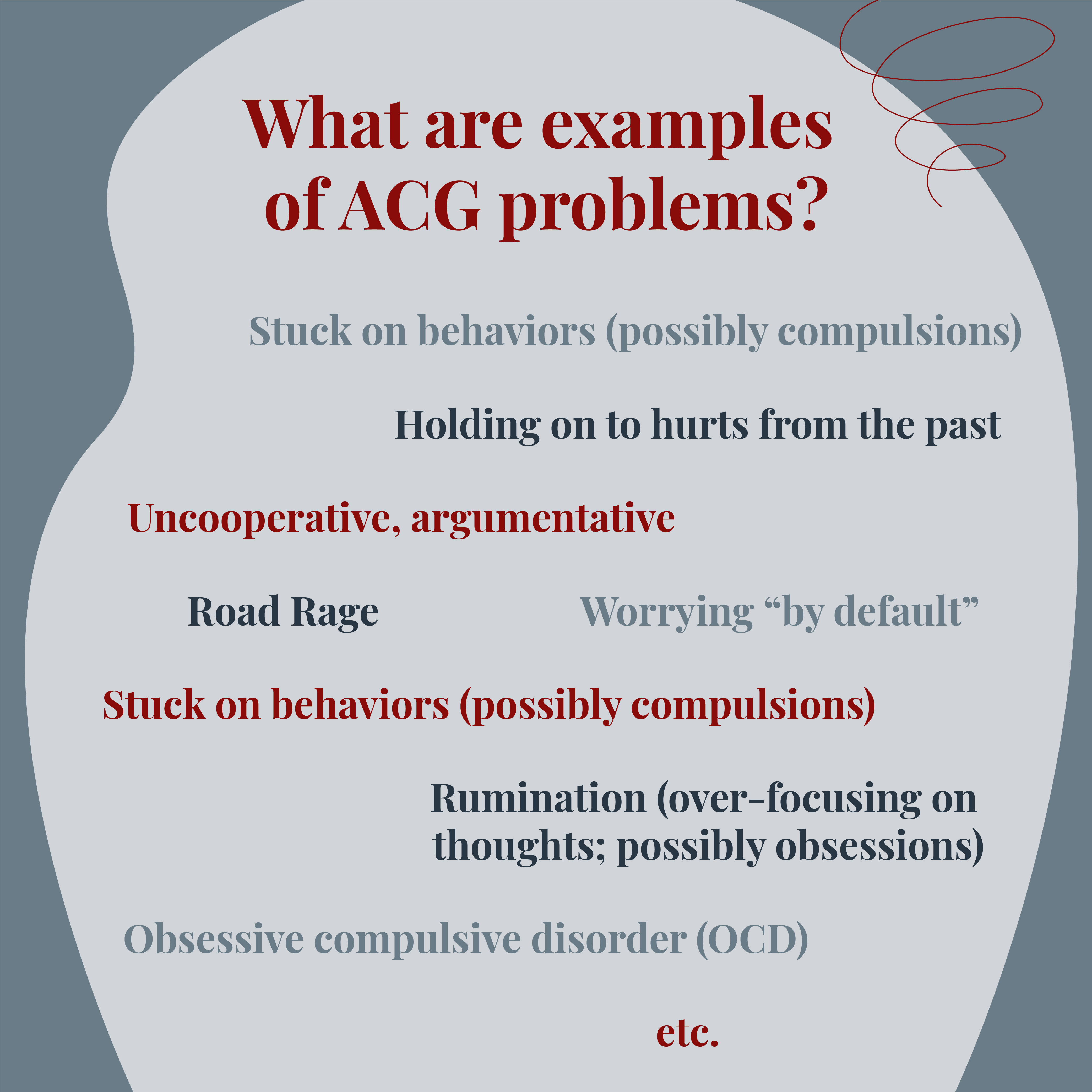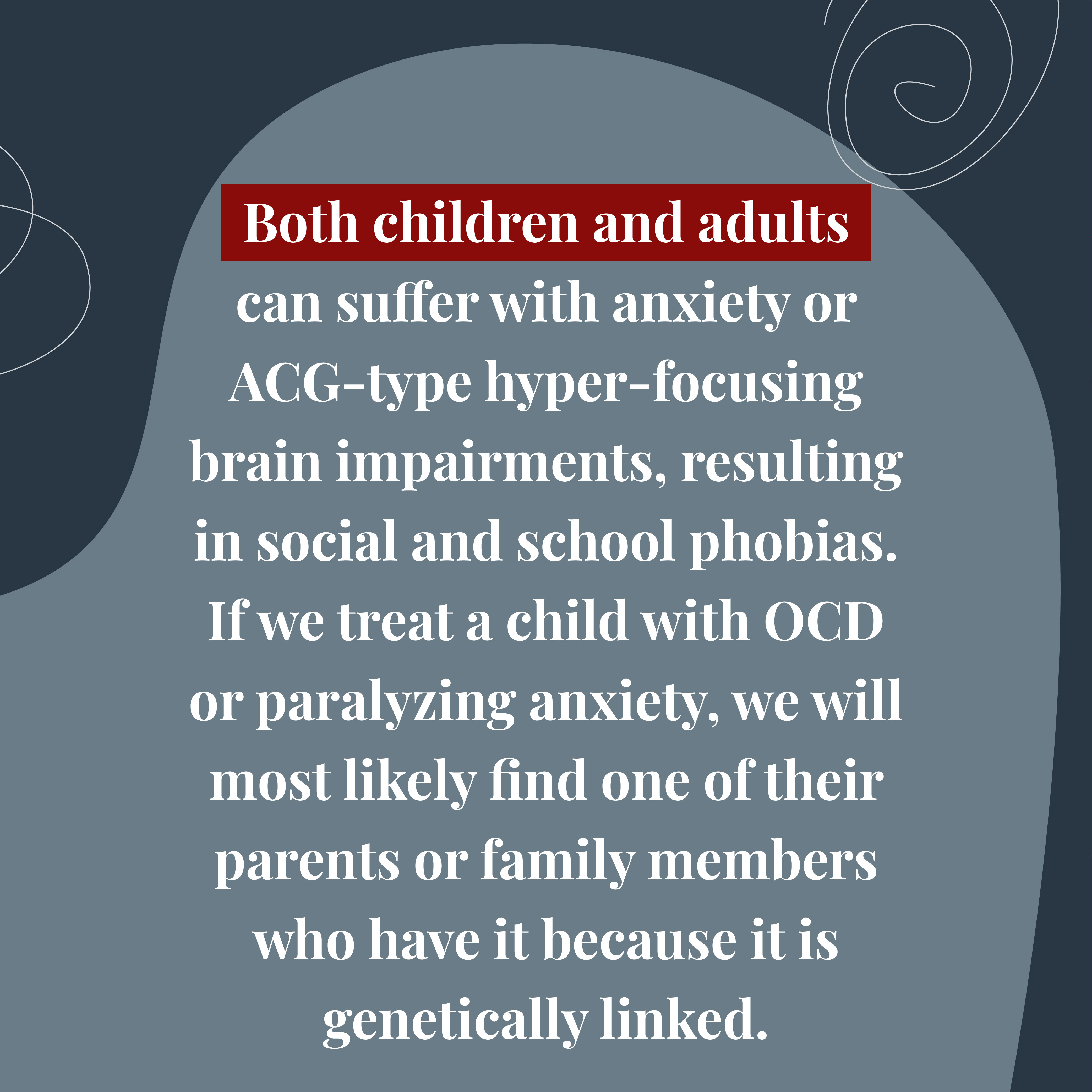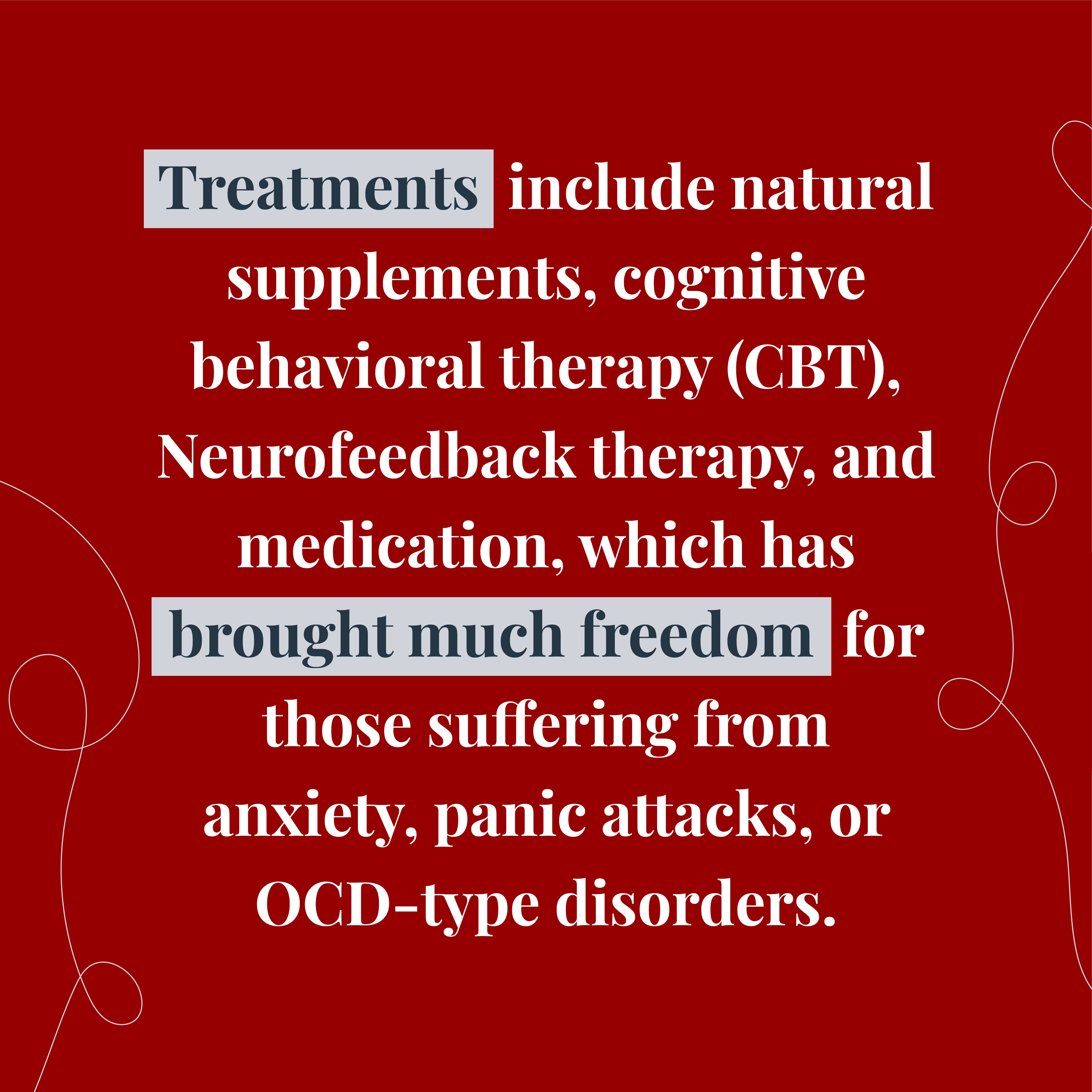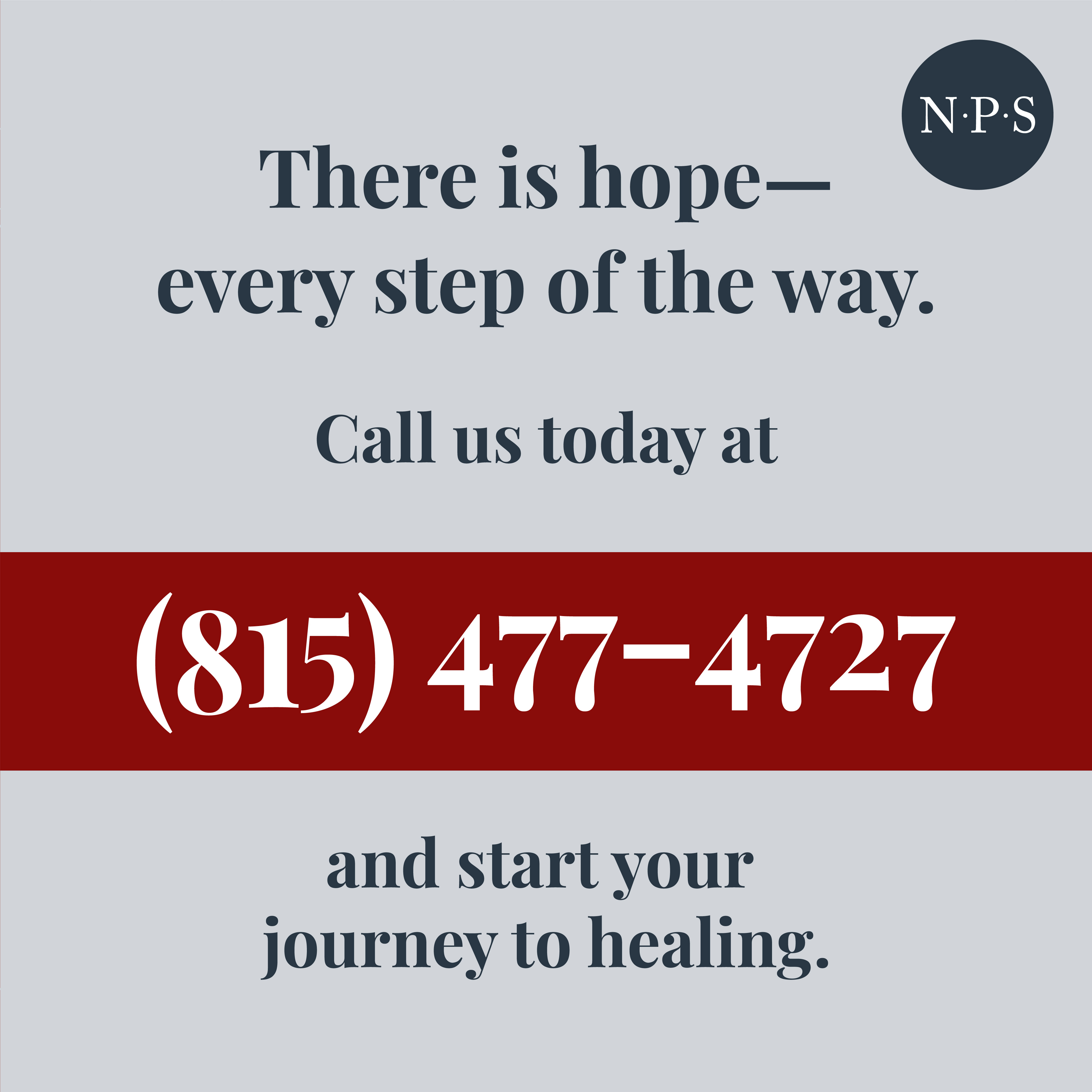Obsessive Compulsive Disorder
Obsessive Compulsive Disorder
When Dr. Neal first came into the field over 40 years ago, the prevailing course of treatment for anxiety disorders and obsessive-compulsive disorder (OCD) was primarily psychodynamic psychotherapy. Medication was viewed mainly as an adjunct to reduce the symptoms of anxiety, not as a primary treatment to target the region of the brain responsible for causing the anxiety or OCD. Therapy was utilized for exploring people’s life situations to see what was causing their anxiety or OCD.
With the introduction of functional neuroimaging and, hence, a much greater understanding of the brain, epigenetics and brain gut connection, we now can see how the relationship between multiple bodily systems interact to create anxiety and OCD. Many professionals no longer view OCD as an anxiety disorder but rather a result of a specific part of the brain called the “anterior cingulate gyrus.” This brain region “hijacks the person” to lock down or over focus.
Anterior Cingulate Gyrus (ACG) problems:
- Worrying “by default”
- Holding on to hurts from the past
- Uncooperative, argumentative
- Automatic tendency to say no, deliberately uncooperative or oppositional behavior
- Rumination (over-focusing on thoughts; possibly obsessions)
- Stuck on behaviors (possibly compulsions)
- Hair-trigger anger/frustration response (either “over the top” or “freezing you out”)
- Road rage
- Addictive behaviors (eating disorders, alcohol or drug misuse or abuse, chronic pain)
- Obsessive compulsive disorder (OCD)
- Cognitive inflexibility
Both children and adults can suffer with anxiety or ACG type hyper focusing brain impairments, resulting in social and school phobias. Dr. Neal has found that in addition to making behavioral and psychological changes he also addresses balancing a person’s brain function through addressing the balance of their microbiome in their gut.
“I always feel like something terrible is about to happen.”
Once the body chemistry is balanced with good gut health, we can then focus on the behaviors and thoughts that may need to be modified.
If we treat a child with OCD or paralyzing anxiety, we will most likely find one of their parents or family members who have it, because it is so genetically linked. Other options of treatment include natural supplements, cognitive behavioral therapy, Neurofeedback therapy, and medication, which has brought much freedom for those suffering from anxiety, panic attacks, or the OCD type disorders.
Cognitive Behavioral Therapy (CBT)
Because emotions are hard to change, we instead approach anxiety by redirecting and reprogramming both the body and mind through interruption and distraction. Interruption includes deep breathing techniques, alternating body movements, and distraction (such as squeezing a squishy object or turning over a pen in your hand), which serve to distract the brain and refocus energy.
Next we work to divert anxious thoughts. There are several techniques, but using a thought log to identify and extinguish your negative thinking, and then generating positive thoughts to replace them, has the most success. (This is called Cognitive Behavioral Therapy, or CBT.) This tool, along with others that your counselor will use with you to change your thoughts and negative behaviors, can help you make some immediate changes in your life. Other techniques we use include mindfulness, mental imaging, and relaxation techniques. These tools can be quickly learned so that you can start to sense that you have mastery and hope over the anxiety right away. Your counselor can work on what triggers set off the anxiety or panic attacks so you can understand and learn to manage it on your own.
The Next Step
If you think you might have anxiety, anxiety attacks, or OCD symptoms, our counselors are here to help you in your journey.
Are you ready to take the next step?
CONTACT US AND SCHEDULE YOUR FIRST APPOINTMENT TODAY.




